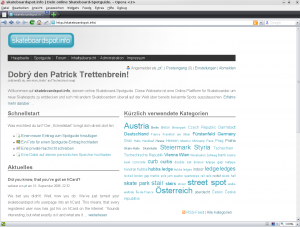Configuration du navigateur/Opera
Ce tutoriel explique comment configurer Opera' pour qu'il se fonde dans vos applications Plasma. Pour ce faire, nous devrons installer le skin Opera Oxygen Project, configurer Opera pour utiliser le schéma Plasma Desktop que vous avez choisi et remplacer les polices par défaut de Opera par celles que KDE utilise.
Etape 1: installer l'habillage
Ouvrez Opera et allez sur le lien suivant :
http://my.opera.com/community/customize/skins/info/?id=8141
Cliquer sur pour installer la skin .
Etape 2: appliquer l'habillage et changer le schéma des couleurs
Allez vers .
Dans la case « Skins », vous verrez une liste de tous les skins actuellement installés. Cliquez sur pour appliquer le skin Opera Oxygen Project à Opera.
Cliquez sur la boîte de menu à côté de « Schéma de couleurs » et sélectionnez pour permettre à « Opera » d'utiliser le jeu de couleurs de KDE.
Étape 3: changer la police
Accédez à . Cliquez sur l'onglet .
Opera a deux polices par défaut : la police normale et la police monospace. Vous pouvez modifier ces polices par défaut en cliquant dessus. Changez la police normale en « DejaVu Sans » et changez la police monospace en « DejaVu Sans Mono ».
C'est ça ! Désormais, Opera ressemblera exactement à vos applications Plasma.

Source
Ce tutoriel est basé sur l'entrée de blog de Patrick Trettenbrein intitulée « Comment donner à Opera 9.5 un aspect natif dans KDE 4 » (qui n'existe plus). Des mises à jour supplémentaires ont été effectuées à mesure que Opera a été mis à jour.


